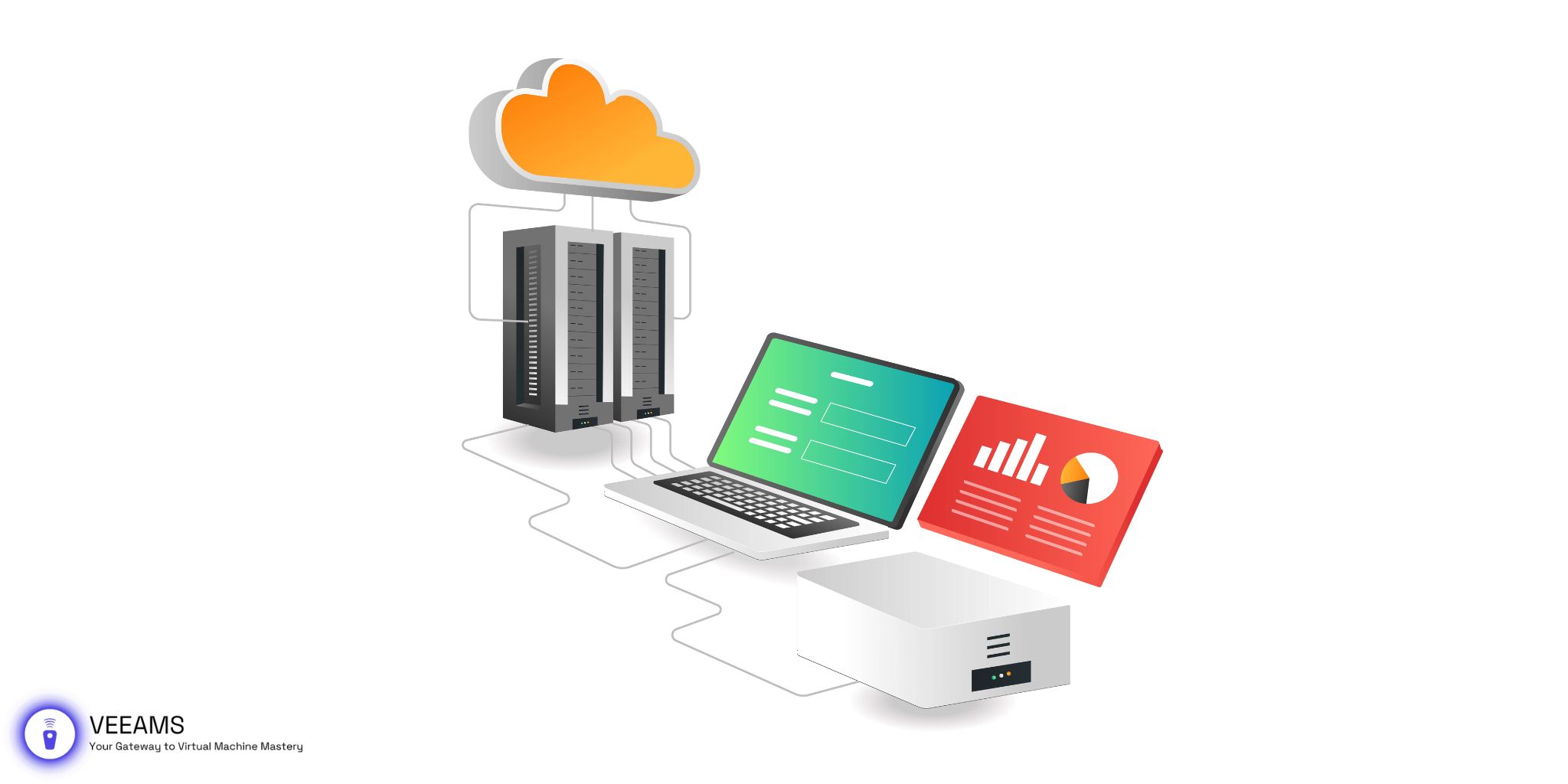Welcome to our comprehensive guide on automating VBK file backups with Veeam, designed especially for beginners! If you’re new to data protection or looking to streamline your backup processes, you’ve come to the right place. In this guide, we’ll walk you through the essentials of using Veeam Backup & Replication to automate the backup of your VBK files, ensuring your data remains safe and recoverable.
Why Automate VBK File Backups?
In today’s fast-paced digital world, data is not just an asset; it’s the backbone of business operations and personal memories. With the increasing volume and importance of data, manual backup processes are not only cumbersome but also prone to human error. This is where automation comes into play, transforming the way we protect our digital assets. Here are the key benefits of automating your VBK file backups with Veeam:
Efficiency and Time-Saving
Automating your backups means you’re no longer tied to manual processes. Scheduled backups run without the need for intervention, saving valuable time and resources. This efficiency allows you and your team to focus on more strategic tasks, knowing your data protection is on autopilot.
Reliability and Consistency
Manual backups are susceptible to inconsistencies, often due to varying schedules or oversight. Automation ensures your backups are performed regularly and consistently, reducing the risk of data loss. With Veeam, you can set backup jobs to run at optimal times, ensuring your data is always protected without impacting system performance.
Improved Data Protection
Automated backups with Veeam offer advanced features like encryption and replication, enhancing the security of your stored data. In the event of hardware failure, cyber-attacks, or natural disasters, your automated system ensures that up-to-date backups are readily available for recovery, minimizing downtime and data loss.
Scalability
As your data grows, so do your backup needs. Veeam’s automation capabilities scale with your organization, accommodating increased data volumes without the need for manual reconfiguration. This scalability ensures your backup processes remain efficient and effective, regardless of the size of your data environment.
By automating VBK file backups, you’re not just streamlining operations; you’re securing your organization’s future against unforeseen data challenges. With these compelling benefits, it’s clear why automation is the cornerstone of modern data protection strategies.
Setting Up Your Veeam Environment
Before diving into the automation of VBK file backups, it’s essential to ensure your Veeam environment is correctly set up and ready to go. This section will guide you through the initial setup requirements and best practices to lay a solid foundation for your backup automation journey.
Initial Setup Requirements
- Veeam Backup & Replication Installation: The first step is to install Veeam Backup & Replication on a dedicated server or virtual machine. Ensure your system meets the minimum hardware and software requirements specified by Veeam.
- Storage Configuration: Determine where your VBK backups will be stored. This could be local storage, a Network Attached Storage (NAS) device, or a cloud storage solution. Ensure the storage is accessible and has sufficient space to accommodate your backup needs.
- Network Configuration: Configure your network settings to allow Veeam Backup & Replication to communicate with your virtual environments (e.g., VMware vSphere or Microsoft Hyper-V) and any off-site or cloud storage locations.
- License Activation: Activate your Veeam license to unlock the full capabilities of the software. Veeam offers various licensing options, so choose the one that best fits your needs.
- Adding Virtual Infrastructure: Add your virtual environment to the Veeam console. This process involves specifying your VMware vCenter or Microsoft SCVMM server details and providing the necessary credentials for access.
Best Practices for a Smooth Start
- Perform a Configuration Backup: Before diving deep into backup job creation, it’s wise to back up your Veeam configuration. This precaution safeguards your settings and job configurations, allowing for easy recovery in case of software or hardware failures.
- Update Your Software: Ensure that your Veeam Backup & Replication and virtual environment software are up to date. Regular updates provide new features, performance improvements, and security enhancements.
- Plan Your Backup Strategy: Before automating, outline your backup strategy. Consider factors like backup frequency, retention policies, and which VMs are critical to your operations. A well-thought-out plan ensures your backups meet both compliance and business continuity requirements.
- Test Your Setup: Run test backups to ensure everything is working as expected. These tests help identify any issues with your configuration or network setup before they impact your actual backup jobs.
Setting up your Veeam environment properly is crucial for the success of your backup automation strategy. By following these steps and best practices, you’re now ready to move on to the core of our guide: automating VBK file backups.

Step-by-Step Guide to Automating VBK Backups
With your Veeam environment set up, you’re now ready to automate your VBK file backups. This step-by-step guide will walk you through configuring automated backup jobs in Veeam Backup & Replication, ensuring your data is protected with minimal manual intervention.
1. Launch Veeam Backup & Replication
Open Veeam Backup & Replication. Navigate to the “Backup & Replication” view from the main menu. Here, you’ll find options to manage your backup and replication jobs.
2. Create a New Backup Job
Click on “Backup Job” and select “Virtual machine” to start a new backup job for your VMs. You’ll be prompted to name your job. Choose a descriptive name that clearly identifies the job’s purpose, such as “Daily VM Backup.”
3. Select VMs to Backup
In the job configuration wizard, you’ll select the VMs you wish to back up. You can choose individual VMs, groups, or use tags to specify your selection. It’s essential to include all critical VMs to ensure comprehensive data protection.
4. Configure Backup Storage
Next, specify where your backups will be stored. Choose the backup repository you prepared during the setup phase. You can also configure backup copy jobs to store copies of your backups off-site or in the cloud for added redundancy.
5. Define Backup Schedule
Scheduling is crucial for automation. In the job configuration wizard, go to the “Schedule” section. Here, you can set the job to run automatically at specific times. For most businesses, scheduling backups to run during off-peak hours minimizes impact on system performance.
6. Set Retention Policy
Decide how long you want to keep your backups. Veeam allows you to specify retention based on the number of restore points or days. A longer retention period can be useful, but it requires more storage. Balance your need for historical backups with available storage capacity.
7. Review and Finish
Before finalizing your backup job, review all settings to ensure they meet your requirements. Once satisfied, click “Finish” to save the job. Your automated VBK file backup is now configured and will run according to the schedule you set.
8. Monitor and Test Regularly
Even with automation, it’s important to monitor your backup jobs and perform regular tests to ensure data can be restored successfully. Veeam provides detailed reporting and alerting features to help you stay informed about the status of your backups.
By following these steps, you’ve successfully automated your VBK file backups with Veeam, significantly enhancing your data protection strategy with efficiency and reliability.
Monitoring and Managing Automated Backups
Once your VBK file backups are automated with Veeam, effective monitoring and management become crucial to ensure the integrity and availability of your data. This section will guide you through best practices for overseeing your automated backup processes and maintaining optimal performance.
Utilizing Veeam’s Built-in Monitoring Tools
Veeam Backup & Replication comes equipped with comprehensive monitoring tools that provide real-time insights into your backup jobs. The dashboard offers an overview of job status, success rates, and any issues that require attention. Regularly check this dashboard to stay informed about your backup health.
Interpreting Job Reports
After each backup job, Veeam generates detailed reports that outline the job’s performance, including any errors or warnings. Review these reports to verify that backups are completing successfully. Pay special attention to any failures or issues, as these could indicate problems with your backup storage, network configuration, or VMs.
Setting Up Alerts and Notifications
Configure Veeam to send email notifications for critical events, such as job failures or warnings. These alerts can help you respond quickly to issues, minimizing potential data loss. Ensure that the notification settings are configured to reach the appropriate personnel within your organization.
Troubleshooting Common Issues
- Job Failures: Investigate job failures by reviewing the error messages provided in the job logs. Common issues include network connectivity problems, insufficient storage space, or permissions issues.
- Performance Bottlenecks: If backups are taking longer than expected, check for network bottlenecks, storage performance issues, or insufficient resources on the backup server.
- Storage Management: Regularly monitor your backup repository’s storage utilization. Cleanup old backups that are no longer needed to free up space, adhering to your retention policy.
Regular Testing of Backup and Restore
Automating your backups is only half the battle; regularly testing your ability to restore from those backups is critical. Schedule restore tests to verify that your data can be recovered as expected. This practice not only ensures the reliability of your backups but also familiarizes your team with the restore process in case of an actual disaster.
Keeping Veeam Up to Date
Ensure that your Veeam Backup & Replication software is always up to date. Software updates often include new features, performance improvements, and critical security patches that can enhance your backup and monitoring capabilities.
By proactively monitoring and managing your automated backups, you can ensure that your data remains safe and that your backup processes run smoothly. Regular maintenance and oversight will help you quickly identify and resolve any issues, keeping your data protection strategy effective and reliable.
Conclusion and Next Steps
Congratulations on taking a significant step towards securing your digital assets by automating VBK file backups with Veeam! We’ve covered the essentials—from setting up your Veeam environment and creating automated backup jobs to monitoring and managing your backups effectively.
Automation not only simplifies the backup process but also enhances the reliability and efficiency of your data protection efforts. As you become more familiar with Veeam’s features, consider exploring advanced options like replication and cloud backups to further strengthen your backup strategy.
